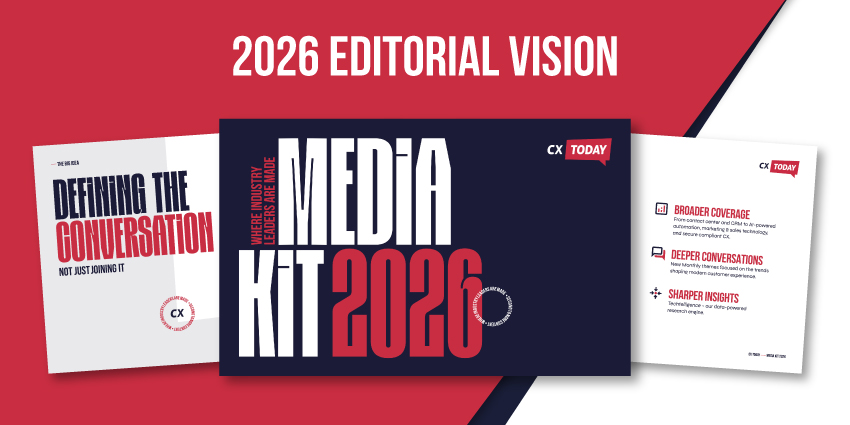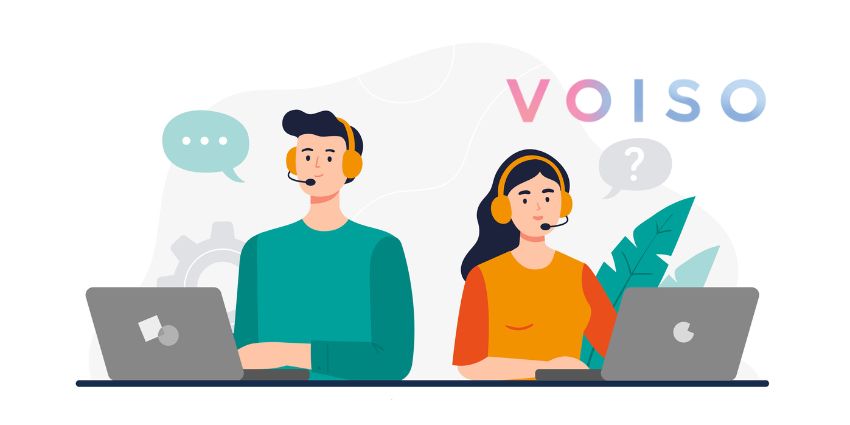Too many businesses choose CCaaS platforms based on hype and instinct, not fit.
A fixation on specific features and specific industry reports doesn’t help here.
After all, while those studies have their place, what works for a 20,000-seat U.S. contact center may not be the best fit for a 50-seat operation in Carlisle. Plus, by the time those studies publish, vendors are often already a few releases ahead, so they aren’t always the most current source.
To choose the right solution, contact centers should start with their pain points, business model, and goals, then evaluate vendors accordingly.
Already, that’s a lot to think through! However, these seven questions will help contact centers cut through the noise, size up CCaaS providers, and zero in on the right fit.
1. Is This Solution Built for How We Actually Operate?
Contact centers should consider their key demand drivers, priority channels, and customer personas to align their proposition with the best-placed vendor.
For example, if 70 percent of the contact center’s interactions come through email and those need to be threaded like tickets, some vendors will handle that far better than others.
Alternatively, if the contact center communicates with lots of customers that don’t speak the native language fluently, translation tools may be required. Again, that’s a competency that swings from one provider to the next.
As Nerys Corfield, Director of Injection Consulting, summarized: “It’s about understanding where your priorities lie and matching the tech platform accordingly.”
Yet, perhaps most crucial is to assess those demand drivers, what causes them, and how the new architecture could help to automate or transform those differently.
2. Will This Platform Set My Team Up for Success?
In the discovery phase, engage with key contact center stakeholders, from agents and supervisors to workforce planners and quality analysts, to determine what is most important to them.
Then, when assessing solutions, pay special attention to the agent experience. Understand how intuitive the UI is, the AI assistance features, and how many apps agents might have to navigate.
That last point is crucial. Contact centers should consider the adjacent systems agents dip in and out of and size up the integrations.
Out of the box is great. But also look at the nuts and bolts. Is it just providing an iframe, or is the application fully embedded? These are critical considerations.
Corfield also stresses that reducing agent cognitive load should be a huge priority, especially as the tasks they run into get more complex with automation. She noted:
Tools that surface context-aware prompts – like ‘Don’t forget this,’ or ‘They mentioned that’ – can help tremendously, especially in nuanced scenarios, like complex insurance policies, for example.
3. Will We Have the Insights We Need and the Means to Action Them?
Ask the C-suite and team leaders what KPIs they care about and consider whether the CCaaS platform enables a clear view of those key customer, employee, and business metrics.
Yet, there’s another big question here: how will the contact center make time to use that insight and convert it into action?
Once buyers ask themselves this question, others will arise. For instance, do we want agents to see their individual and team metrics? Will we use Power BI, Tableau, or native reporting tools? Can we create custom metrics on-platform?
Again, this comes back to aligning the CCaaS platform with the contact center’s operational reality.
4. Is This Platform Future-Proof?
Don’t only think about the core features that are necessary right away. Consider roadmap capabilities and whether they align with the contact center’s longer-term ambitions.
One ambition here may be to switch to another CRM platform. In such situations, it’s critical that the CCaaS platform integrates closely with not just the current CRM, but will knit tightly with the future solution, too.
Contact centers should also get guarantees from their providers that they will maintain an open data approach, so they can shift their data onto other systems without facing barriers.
The Information recently called out two high-profile CCaaS providers for establishing these walled gardens, preventing teams from sending data to rival solutions, and stalling their customers’ AI strategies.
Yet, most importantly, Corfield stresses that a CCaaS platform needs a clear-cut ongoing management strategy. She said:
It’s about understanding the solution, who’s going to manage it, be the product owner, and stay on top of the roadmap. That’s why I always speak to system administrators.
5. What’s the Pricing Model?
This is tricky. After all, every CCaaS provider presents their pricing differently, and AI muddies the situation even more, with different ways of bundling the solution.
Traditionally, providers have presented seat-based models, yet many are shifting towards consumption- and outcome-based pricing.
As such, Corfield recommended:
First, understand your cost base, channel shift, and automation objectives, and then assess how each CCaaS solution compares.
Although, just as a general principle, if contact volumes swing wildly, consumption-based pricing is likely the better option to avoid overpaying for agent seats. However, contact centers may save money with a seat-based model if their demand is less “peaky”.
6. What Are Our Current Challenges?
For Corfield, it’s critical for contact centers to identify their “normalized inefficiencies”.
“I realized this morning that I manually connect to my Wi-Fi every day instead of using auto-connect, because I don’t want to search for the code,” she said. “That’s a minor inefficiency. But if 200 people do that daily, over a year, it adds up.”
Understanding similar pain points from the agent, customer, and operational perspectives, and how the CCaaS platform could help to overcome them, will help differentiate between solutions.
From an operational perspective, it’s usually about reducing Excel spreadsheets. However, consider customer and agent pain points closely, especially those within high-value, high-frequency journeys, and consider how different platforms may help orchestrate and enable more seamless experiences.
7. Can We Speak with Reference Customers?
Analyst reports may provide some insight into vendor strengths and weaknesses. But, there’s nothing better than speaking with peers who have already implemented a shortlisted provider’s platform. As Corfield advised:
Ask to speak to reference customers who look and feel like you, not necessarily in the same vertical, but doing similar things.
In doing so, think beyond: did you like the platform? Instead ask:
- How was the implementation?
- Did they deliver on time?
- What’s the ongoing support like?
- Does the vendor deliver on their promises?
Site visits are ideal. Many vendors and resellers understandably hate arranging them, but they’re invaluable, and some providers win a lot of deals by closing the gap in this way.
One CCaaS Provider to Watch Out for…
There are other key considerations to make. For instance, if we choose a platform with rapid feature rollout, do we have the capacity to adopt and embed those changes?
Yet, as buyers whittle their way through such considerations, particular providers will rise to the fore. As an example, CX Today recognizes Cisco, with its Webex Contact Center platform, as one vendor that often stands out.
Among its advantages, Cisco’s Webex Contact Center offers a unified platform that integrates CCaaS, UCaaS, and CPaaS capabilities, delivering flexible solutions for organizations, whether they require on-premises, hybrid, or cloud deployments.
With its CPaaS tie-in, it upholds those critical close integrations with adjacent systems. It also enables a more mature proactive customer support strategy, taking signals from various systems and translating those into automated communications that transform service.
Cisco’s Webex AI Agent is also an exciting solution that integrates with its CCaaS and CPaaS solutions to engage autonomously with customers and advance on conventional decision-tree-based virtual agents.
Many are understandably cautious about these technologies, given recent headlines regarding prompt injection attacks getting these agents to reveal sensitive information. Lenovo proved the latest to fall into this trap.
However, Cisco’s security expertise and understanding of real guardrails are differentiators that stretch across its CCaaS offering.
Additionally, its advanced agent experience portfolio, AI-based reporting, and open data approach will tick a lot of boxes.
Also, as one of only two “Customers’ Choice” vendors in Gartner’s latest CCaaS report, based solely on verified customer reviews, its clients are willing to engage and recommend.
All that said, the best-placed CCaaS platform will depend on the individual business. Nevertheless, Cisco offers a solution to keep top of mind.
To dive deeper into the CCaaS solution, visit the Cisco Webex website.







